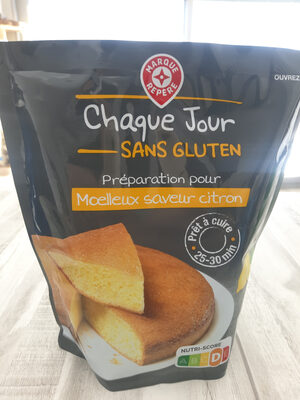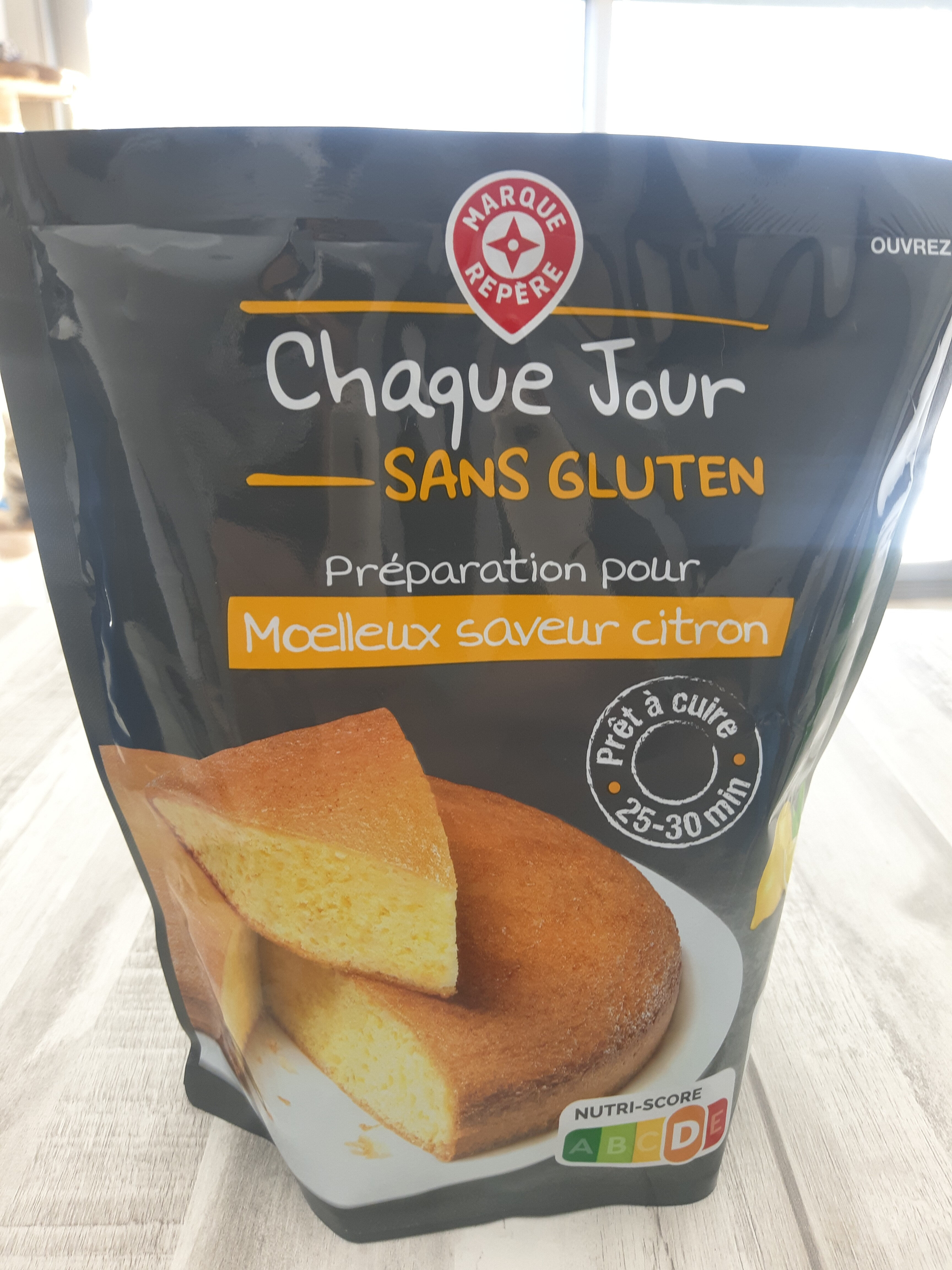Préparation pour moelleux saveur citron sans gluten - Chaque Jour Sans Gluten - 500 g
This product page is not complete. You can help to complete it by editing it and adding more data from the photos we have, or by taking more photos using the app for Android or iPhone/iPad. Thank you!
×
Some of the data for this product has been provided directly by the manufacturer Scamark.
Barcode: 3564706514744 (EAN / EAN-13)
Quantity: 500 g
Packaging: Plastic
Brands: Chaque Jour Sans Gluten, Marque Repère
Categories: Snacks, Sweet snacks, Biscuits and cakes, Cakes, Pound Cake, es:D Galletas y pasteles
Labels, certifications, awards: No gluten, Nutriscore
Stores: Leclerc
Countries where sold: France
Matching with your preferences
Environment
Carbon footprint
Packaging
Transportation
Other information
Preparation: Ce sachet permet de réaliser un gâteau de 6/8 parts. Préchauffer le four à 150°C. Verser la pâte dans un moule rond de 24 cm. Faire cuire au four traditionnel 25 à 30 minutes à 150°C. Vérifier la cuisson en plantant la lame d'un couteau au milieu du gâteau. Si elle ressort propre, le gâteau est cuit, dans le cas contraire, prolonger la cuisson. Attendre que le gâteau refroidisse avant de le démouler.
Report a problem
Data sources
Product added on by kiliweb
Last edit of product page on by packbot.
Product page also edited by ecoscore-impact-estimator, inf, mauro-gabriel25, openfoodfacts-contributors, org-scamark, scamark, sebleouf, teolemon, yuka.WktrWUlaNE8rYWd1a01NZnp4eU4rSXh4eGI2bFpucTVCOWcxSVE9PQ.






